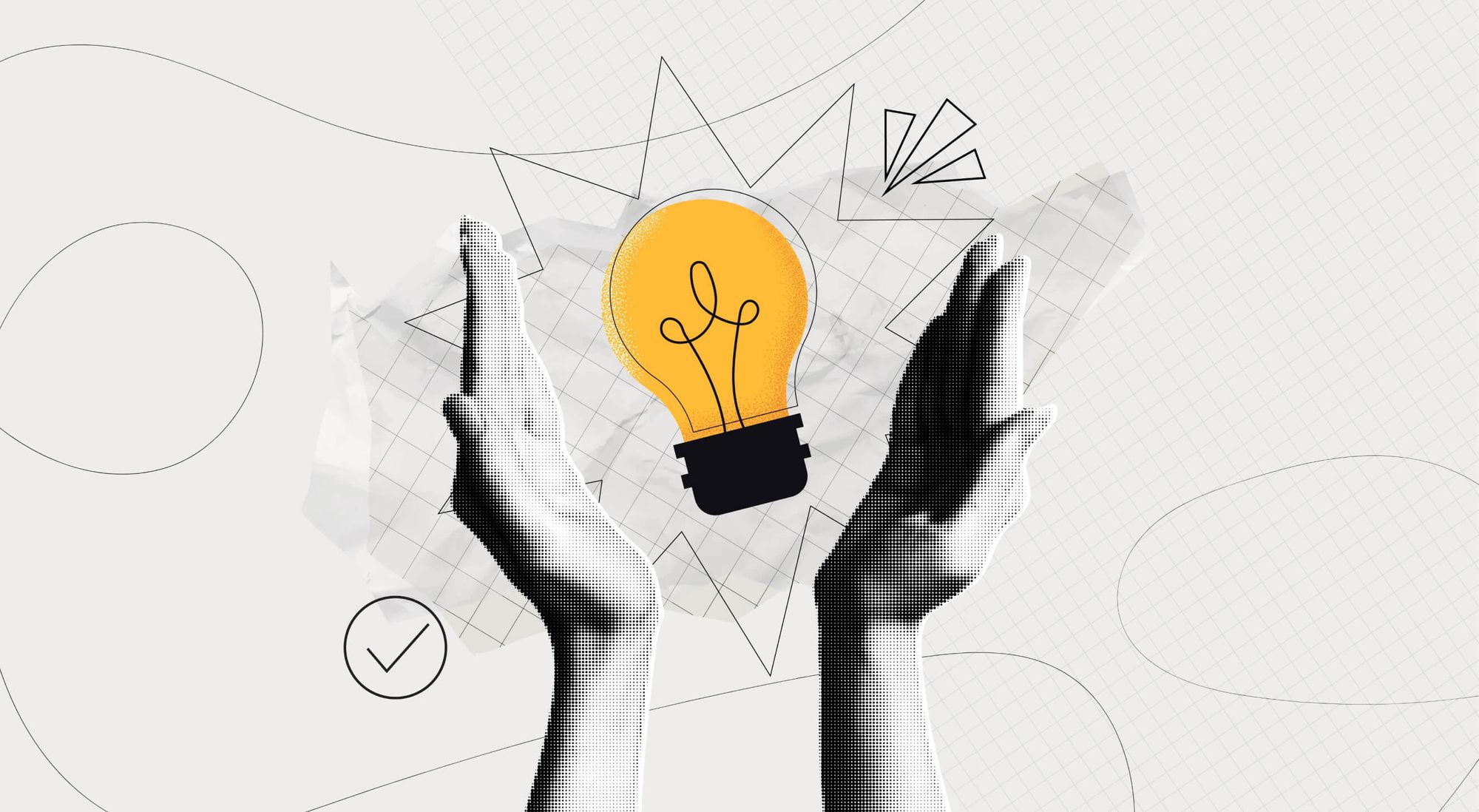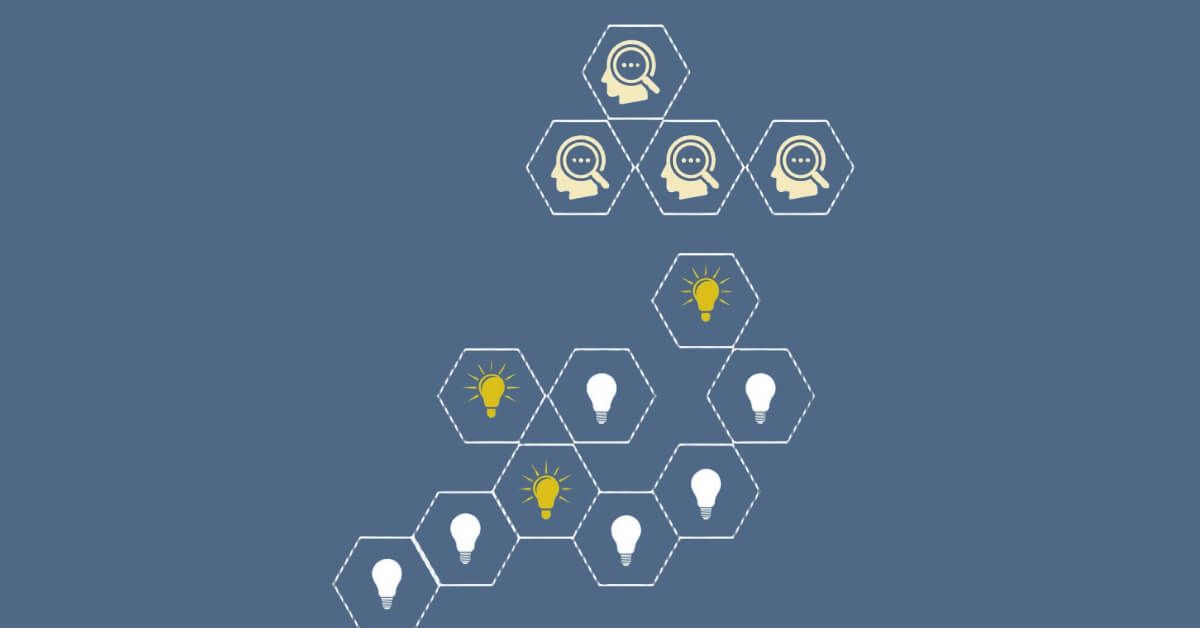How HR innovation boosts employee retention and productivity in 2025

Remember the first time you saw someone use a flip phone after you’d already switched to a smartphone? It made you pause—nostalgic, yes, but also a little stunned that something so revolutionary had quietly become the new normal.
That’s exactly what HR innovation feels like today. The game has changed, but not everyone’s playing it yet. From AI-driven insights to empathetic leadership tools, innovation in HR isn’t just about tech—it’s about transforming how we connect, support, and evolve with our people.
If your HR still feels like a flip phone in a smartphone world, it might be time for an upgrade. Let’s talk about what real HR innovation looks like—and why it’s about much more than software.
HR innovation meaning

HR innovation refers to the proactive and strategic application of new ideas, technologies, processes, and methodologies within the field of Human Resources to enhance and optimize the overall employee experience, streamline HR operations, and align workforce management with broader organizational goals. It’s more than adopting tech—it’s a mindset shift embracing creativity, agility, and continuous improvement in HR.
In essence, a successful HR innovation aims to break away from traditional, static HR practices and embrace a dynamic, forward-thinking approach. This can involve leveraging cutting-edge technologies like artificial intelligence for talent acquisition, implementing employee experience platforms, adopting data-driven decision-making processes, using employee listening tools, and introducing novel strategies to enhance employee development and retention.
The ultimate goal of HR innovation is to create a workplace environment that not only attracts and retains top talent but also nurtures employee engagement, satisfaction, and productivity.
By staying ahead of industry trends and proactively embracing change, organizations can position themselves as leaders in the evolving landscape of human resources, fostering a culture of innovation that resonates throughout the entire workforce.
Why is HR innovation so important?
HR innovation is the driving force behind building agile, resilient, and future-ready organizations. In a world where workforce expectations and market dynamics are constantly evolving, innovative HR practices are essential for businesses to stay competitive and nurture top talent.
- Enhances talent management strategies: HR innovation transforms talent management by using data-driven insights and AI tools to streamline recruitment, improve onboarding, and predict future workforce needs. This leads to smarter hiring decisions and long-term talent retention.
- Drives employee engagement and productivity: By adopting innovative HR solutions like employee experience platforms and AI-driven feedback systems, organizations can boost employee engagement, resulting in higher productivity and job satisfaction.
- Improves employee retention: Innovative employee retention strategies, such as personalized career development plans, flexible work models, and data-backed well-being programs, help reduce turnover and create a more engaged workforce.
- Fosters a culture of continuous learning: HR innovation introduces microlearning, gamified training, and skill development platforms that encourage continuous learning, helping employees adapt to new technologies and changing market needs.
- Supports diversity, equity, and inclusion (DEI): AI-powered diversity tools help eliminate bias in recruitment and performance evaluations, fostering a more inclusive workplace where all employees feel valued.
- Prepares businesses for future challenges: By leveraging predictive analytics and agile HR practices, companies can anticipate workforce trends, proactively address challenges, and stay resilient in an ever-changing business landscape.
How HR is using innovative tech?
Human Resources has transitioned from a traditional administrative role to a strategic partner in organizational growth, thanks to the integration of innovative technologies. These tools not only simplify routine tasks but also provide deeper insights, enhance employee experiences, and foster a more agile workforce. Here’s how HR is leveraging technology to drive meaningful change:
Employee well-being and mental health platforms
HR teams are prioritizing employee well-being by using AI-driven wellness platforms that monitor stress levels, promote mental health resources, and offer personalized wellness programs. These tools analyze employee feedback and engagement data to identify burnout risks, helping HR intervene early and foster a healthier work environment.
Diversity, equity, and inclusion (DEI) analytics
Innovative HR practices in the corporate world now include DEI-focused analytics platforms. These tools help HR track diversity metrics, assess pay equity, and identify biases in recruitment and promotions. By using data to guide DEI strategies, HR can create more inclusive workplaces that reflect diverse talent pools.
Learning and development through microlearning
Continuous skill-building is at the core of innovative human resources strategies. Traditional training programs are being replaced by AI-powered microlearning platforms that offer bite-sized, on-demand lessons tailored to individual learning styles. These platforms boost knowledge retention, make continuous learning more accessible, and align employee growth with organizational goals.
Robotic process automation (RPA) for HR operations
HR departments are using RPA to automate repetitive tasks like payroll processing, benefits administration, and compliance reporting. By reducing manual work, freeing up HR professionals to focus on strategy and employee engagement. This shift not only reduces errors but also reinforces HR’s role in organizational innovation by boosting efficiency.
Employee engagement through gamification
To boost engagement and productivity, HR teams are incorporating gamification into performance management and training programs. Using leaderboards, badges, and rewards, gamified platforms encourage healthy competition, increase motivation, and create a more dynamic work environment. This creative approach to engagement is a prime example of human resources innovation driving workplace transformation.
How do you drive innovation in HR?

Driving innovation in HR involves a strategic and proactive approach that goes beyond simply implementing new technologies. Here are key strategies to foster innovation in Human Resources:
- Embrace a culture of innovation: Cultivate a work environment that encourages creativity, risk-taking, and continuous improvement. Foster a culture where employees feel empowered to share ideas, experiment with new approaches, and learn from both successes and failures.
- Stay informed on industry trends: Regularly monitor and adapt to emerging trends in HR technology, workforce management, and employee engagement. Attend industry conferences, participate in webinars, and engage with HR communities to stay ahead of the curve.
- Invest in technology: Leverage cutting-edge HR technologies, such as artificial intelligence for recruitment, data analytics for workforce planning, and employee experience platforms. Choose tools that align with your organization's goals and enhance efficiency while providing a positive experience for employees.
- Prioritize employee experience: Put employees at the center of HR innovation efforts. Understand their needs, expectations, and pain points throughout the employee lifecycle. Use feedback mechanisms, surveys, and qualitative data to continuously improve the overall employee experience.
- Promote continuous learning: Encourage ongoing skill development and provide resources for employees to stay current with industry trends. This not only enhances individual capabilities but also contributes to a culture of learning and adaptability within the organization.
- Collaborate across departments: Break down silos and encourage collaboration between the HR team and other departments. Cross-functional teams can bring diverse perspectives to problem-solving and lead to innovative solutions that address broader organizational challenges.
- Experiment with new practices: Implement pilot programs or small-scale experiments to test new or existing HR practices before full-scale implementation. This allows for learning from real-world scenarios and adjusting strategies based on actual outcomes.
- Data-driven decision-making: Harness the power of data analytics to inform HR decisions. Analyze workforce data to identify trends, predict future needs, and make informed decisions that drive organizational success.
- Encourage leadership support: Obtain support from organizational leadership for HR innovation initiatives. Leadership buy-in is crucial for allocating critical resources, overcoming resistance to change, and ensuring that innovation is a strategic priority.
- Celebrate and recognize innovations: Acknowledge and celebrate successful innovations within the HR function. Innovative recognition and reward program efforts to assist employees fosters a positive culture and motivates employees to contribute their creative ideas.
Challenges of HR innovation in the workplace
While human resources innovation offers incredible potential, implementing new initiatives often comes with challenges. HR teams navigating innovation in human resources must understand and address these hurdles to build a sustainable HR strategy for innovation.
- Resistance to change: Employees and leaders may push back on innovation in HR practices, fearing disruption. The role of HR in driving innovation starts with communicating benefits clearly and showing how HR can improve employee experience through progress.
- Limited budget and resources: With lean teams and tight budgets, prioritizing innovation in HR processes with high ROI is key. Smart allocation supports long-term hr and innovation success.
- Data privacy concerns: As hr innovators adopt new tools, ensuring compliance and securing employee data is vital in innovation in talent management and overall trust.
- Skill gaps in HR teams: Upskilling ensures teams can fully embrace innovation in human resources. Without it, the role of HR in organizational innovation is limited.
- Measuring innovation success: Defining KPIs helps track how HR initiatives perform and how HR can improve productivity—making HR’s role in organizational innovation more strategic and measurable.
How HR innovation benefits businesses
HR innovation is more than adopting the latest tools—it's about transforming how organizations attract, engage, and retain talent. By embracing new innovations in HR, companies can create more agile, productive, and employee-centric workplaces that drive long-term success.
- Improved talent acquisition and retention: HR innovative solutions like AI-powered recruitment tools help identify top talent faster and reduce hiring bias. Predictive analytics also enable HR teams to anticipate turnover risks and implement strategies to improve retention.
- Enhanced employee engagement: Modern HR platforms, such as employee experience tools and real-time feedback systems, foster stronger connections between employees and leadership. These HR innovation examples promote continuous communication, improving engagement and job satisfaction.
- Streamlined HR operations: Automation and AI simplify repetitive tasks like payroll, onboarding, and compliance tracking. This efficiency frees up HR teams to focus on strategic initiatives, highlighting the role of HR in innovation.
- Data-driven decision-making: New innovations in HR offer advanced analytics that provide insights into employee performance, engagement trends, and workforce planning. This data helps leaders make informed decisions that align with business goals.
- Stronger organizational agility: Agile HR practices allow organizations to adapt quickly to market changes and shifting employee needs. This flexibility supports continuous growth and helps businesses stay competitive in a fast-evolving landscape.
What are the three innovative approaches to HR?

Here are three innovative approaches that HR managers can adapt in their organizations to enhance their human resources practices:
1. Employee experience platforms (EXPs)
Employee Experience Platforms are comprehensive tools designed to improve the overall journey of employees within an organization. These platforms go beyond traditional HR systems, integrating various aspects of the employee experience, including onboarding, learning and development, performance management, and employee engagement.
EXPs leverage data analytics to provide insights into employee sentiment, allowing HR professionals to make data-driven decisions that positively impact the workplace.
2. Agile HR practices
Borrowing from the agile methodology commonly used in software development, Agile HR is an innovative approach that promotes flexibility, collaboration, and rapid adaptation within HR processes. This method involves breaking down traditional hierarchies, promoting cross-functional teams, and embracing iterative development.
Agile HR allows organizations to respond swiftly to changing business needs, fostering a more dynamic and responsive HR function. This approach is particularly beneficial in industries where rapid adaptation to market changes is essential.
3. Predictive analytics for talent management
Leveraging predictive analytics in HR involves using data and statistical algorithms to forecast future trends and behaviors within the workforce.
This approach enables HR professionals to make more informed decisions in areas such as talent acquisition, succession planning, and employee retention.
By analyzing historical data, organizations can identify patterns, predict future talent needs, and proactively address potential challenges. Predictive analytics helps HR leaders move from a reactive stance to a proactive one, aligning talent strategies with the organization's long-term goals.
15 HR innovation examples for the upcoming times

As workplaces evolve, HR is adopting forward-thinking strategies to boost efficiency, employee engagement, and overall productivity. From wellness platforms to AI-driven recruitment, here are key HR tech innovation examples transforming the modern workplace.
- Employee wellness tools: Prioritizing mental and physical health is now central to employee engagement. Wellness platforms offer resources like stress management, fitness programs, and mental health support, fostering a healthier and more resilient workforce.
- Digital onboarding platforms: Streamlining onboarding through digital tools enhances the new hire experience. These platforms guide employees through training, document submission, and company culture integration, simplifying the process and boosting early engagement.
- AI-based recruitment tools: AI-driven systems optimize recruitment by analyzing candidate profiles, predicting success rates, and reducing bias. This human resources innovation idea speeds up hiring while ensuring the best cultural fit.
- Automated HR data management: One of the leading HR innovation ideas is automating repetitive tasks like payroll, attendance tracking, and compliance reporting. This reduces errors, saves time, and allows HR teams to focus on strategy.
- Remote work management technology: As hybrid work becomes the norm, tools that support virtual collaboration, project tracking, and real-time communication help maintain productivity and team cohesion.
- Employee self-service portals: Empowering employees with self-service platforms enables direct access to manage benefits, leave requests, and personal data, enhancing transparency and reducing HR workload.
- Blockchain for secure employee data: Leverage blockchain technology to enhance the security and transparency of employee data. This innovation ensures that sensitive HR information, such as payroll and performance records, is securely stored, accessible only to authorized personnel, and resistant to tampering.
- AI-powered Chatbots: Integrate chatbots into HR systems to provide instant and personalized support to employees. Chatbots and mobile apps can answer routine HR queries, assist with benefits enrollment, and streamline communication, freeing up HR professionals to focus on more complex tasks.
- Gamified learning platforms: Develop gamified learning solutions for employee training and development. Gamification adds an element of fun and competition, making learning more engaging and effective. Employees can earn rewards and recognition as they progress, enhancing knowledge retention and skill acquisition.
- People analytics for well-being: Utilize advanced people analytics to assess employee well-being. By using employee survey tools to analyze data on factors like workload, work hours, and stress levels, organizations can proactively address burnout, enhance mental health support, and create a healthier work environment.
- Virtual reality (VR) for immersive training: VR technology offers realistic, hands-on simulations for onboarding, safety drills, and leadership training. This immersive method boosts engagement and retention, especially in industries like healthcare, manufacturing, and hospitality.
- Sentiment analysis tools for real-time feedback: By analyzing employee feedback through natural language processing, sentiment analysis tools help HR teams detect patterns, morale shifts, or cultural red flags—enabling faster, data-backed interventions.
- DEI analytics dashboards: These tools offer deep insights into workforce demographics, pay equity, promotion rates, and hiring practices—allowing HR to track the effectiveness of DEI initiatives and build more inclusive workplaces.
- Learning Experience Platforms (LXPs): LXPs use AI to personalize learning paths based on employee roles, goals, and interests. Unlike traditional LMSs, they focus on employee-driven growth and upskilling in real time.
- Performance review automation software: These tools streamline the review process with customizable templates, automated reminders, real-time feedback loops, and integrated goal tracking—making performance management more consistent and less biased.
Ways to encourage HR innovation in your organization

Fostering innovation in HR isn’t just about using new tech—it’s about cultivating a mindset of creativity, experimentation, and ongoing growth. Here’s how to spark human resources innovation within your team:
- Create a culture of creativity and experimentation: Encourage an open environment where team members feel safe sharing hr innovation ideas. Support trial-and-error approaches, knowing that even failed hr innovation examples offer learning opportunities.
- Invest in continuous learning and skill development: Equip teams with the tools to explore innovative HR strategies. Stay current with human resources innovation ideas through webinars, workshops, and emerging tech that fuel innovation in HR management.
- Promote cross-functional collaboration: Collaboration across departments brings fresh perspectives and inspires innovative HR practices, helping generate HR innovative solutions for broader business challenges.
- Recognize and reward innovation: Celebrating creativity reinforces innovative human resources culture and keeps momentum around HR innovation ideas strong.
- Secure leadership buy-in: The role of HR in innovation thrives when leadership supports innovation in HR through aligned goals and committed resources. That’s what HR innovation truly looks like.
How do you implement human resources innovations within your organization?
These are the steps to implement human resources innovations within your organization.
- Assess current state: Evaluate existing HR processes and identify areas for improvement or innovation by gathering feedback from employees and assessing current technology usage.
- Set clear objectives: Define specific goals for HR innovation, aligning them with overall organizational objectives to ensure strategic alignment and measurable outcomes.
- Invest in technology: Choose and implement HR technologies that align with innovation goals, addressing pain points and enhancing efficiency in areas such as talent acquisition, performance management, and employee engagement.
- Promote a culture of innovation: Cultivate an environment that encourages creativity and risk-taking. Communicate the importance of innovation and reward employees for contributing innovative ideas.
- Provide training and development: Offer training programs to HR professionals on emerging trends and technologies. Ensure they have the skills needed to leverage innovative tools effectively.
- Encourage cross-functional collaboration: Facilitate collaboration between HR and other departments. Cross-functional teams bring diverse perspectives and foster innovation across the organization.
- Implement pilot programs: Roll out small-scale pilot programs to test innovative HR initiatives. Gather feedback, assess results, and make adjustments before full-scale implementation.
- Gather employee feedback: Solicit input from employees throughout the innovation process. Their perspectives can provide valuable insights into the effectiveness and impact of HR innovations on the workforce.
- Monitor and evaluate: Continuously monitor the performance of HR innovations. Use data and analytics to evaluate their impact on key HR metrics and adjust strategies accordingly.
- Leadership support and communication: Secure leadership buy-in for HR innovation initiatives. Communicate the value and benefits to leaders, ensuring ongoing support and resources for successful implementation.
How HR innovation drive employee engagement and build a resilient workforce?
Innovation in HR management is a game-changer for fostering employee engagement and building a resilient workforce. By integrating innovative human resources strategies and leveraging advanced tools, organizations can reshape HR practices to align with modern workforce needs and long-term business goals.
- Embracing innovation in human resource management customizes employee experiences through advanced platforms, addressing individual needs and boosting engagement, satisfaction, and loyalty.
- Predictive analytics identify skill gaps, anticipate talent needs, and enable proactive planning, ensuring the organization adapts to challenges and evolving conditions.
- Gamified learning and microlearning empower employees with continuous development, helping them stay agile and resilient in dynamic industry landscapes.
- Agile HR practices improve flexibility and responsiveness, enabling businesses to pivot quickly during disruptions while maintaining strong employee engagement.
- Personalized benefits platforms and employee-centric tools highlight an organization’s commitment to well-being, fostering belonging and increasing retention.
- Ultimately, innovative human resources strategies create forward-thinking workplaces that attract top talent, foster loyalty, and build a workforce ready for future success.
How employee engagement software supports HR innovation effectively
Employee engagement software is more than just a tool for collecting feedback—it’s a catalyst for HR innovation, enabling data-driven decisions, fostering a culture of continuous improvement, and empowering HR teams to create agile, people-centric strategies.
By integrating technology with human resource management, these platforms transform traditional HR practices into dynamic, forward-thinking processes.
- Real-time feedback and pulse surveys: Continuous feedback tools allow HR teams to capture employee sentiment instantly, identifying engagement trends and potential issues before they escalate. This fosters a culture of open communication and enables quicker, data-backed decisions.
- AI-driven analytics for smarter decision-making: Advanced analytics break down complex data into actionable insights. HR teams can spot patterns, predict turnover risks, and create targeted strategies for retention, productivity, and well-being.
- Personalized engagement strategies: Employee engagement software tailors initiatives based on individual preferences and team dynamics, promoting inclusivity and ensuring that engagement strategies resonate across the workforce.
- Automated workflows and communication: Automation reduces manual work by streamlining survey distribution, reminders, and reporting, allowing HR teams to focus on strategic planning and innovation.
- Data-backed action planning: The platform doesn’t just highlight issues—it provides guided recommendations, helping managers and HR teams implement effective solutions that drive long-term employee satisfaction and organizational growth.
Conclusion
Strong team dynamics aren’t just a nice-to-have—they’re the foundation of a high-performing, resilient, and future-ready workforce. Teams that trust each other, communicate openly, and collaborate seamlessly are more agile, more innovative, and more engaged. When team dynamics are strong, employee satisfaction soars, problems get solved faster, and businesses are better equipped to navigate change.
To build these kinds of teams, organizations need more than just offsite retreats or icebreaker games. They need smart, scalable tools—like an employee engagement software—that provide continuous feedback, uncover communication gaps, and highlight collaboration barriers. The right platform makes it easier for HR and leadership to truly understand what drives (or disrupts) team synergy.
That’s where CultureMonkey comes in. As a powerful employee engagement survey platform, it delivers real-time insights through pulse surveys, sentiment analytics, and AI-driven feedback. It helps teams connect, communicate, and grow—together.
FAQs
1. What are the 7 major activities of HR?
The seven major activities of HR include: 1. Recruitment and staffing to attract top talent through innovation in HR; 2. Training and development using innovative HR practices; 3. Performance management supported by hr innovation ideas; 4. Compensation and benefits driven by human resources innovation; 5. Employee relations fostering trust; 6. Compliance with laws; 7. Strategic workforce planning reflecting innovation in HR management.
2. How can HR be more innovative?
HR can be more innovative by adopting hr innovative solutions, using AI in recruitment, and enabling real-time feedback. Embracing innovative HR strategies, flexible work models, and continuous learning fosters innovation in HR. Prioritizing hr and innovation through collaboration and experimentation supports innovation in talent management and shows how HR can improve employee experience and engagement.
3. What does innovation mean in HR?
What is HR innovation? It means applying tech, creativity, and forward-thinking to human resources innovation. It includes innovation in HR processes, AI-driven hiring, real-time feedback, and flexible learning. These hr innovation examples reflect the role of HR in innovation—transforming culture, boosting performance, and driving innovation in human resources and organizational growth.
4. How is the HR role evolving?
The HR role is evolving into a strategic driver of innovation in HR practices and culture. Now, HR innovators use data, feedback tools, and wellness programs to improve experience and performance. This shift reflects HR’s role in organizational innovation, showing how HR can improve productivity and act as a catalyst for continuous change and hr strategy for innovation.
5. What are the key drivers of HR innovation?
Key drivers include automation, analytics, and innovative human resources methods like personalized learning and pulse surveys. These support hr and innovation by aligning strategy and people. The role of HR in driving innovation is clear—fueling agility, retention, and the hr’s role in organizational innovation through smarter, human-centered systems in innovation in human resources.
6. How do you keep up to date with the latest HR innovations?
Staying updated involves engaging with industry webinars, reading case studies on hr innovation examples, and subscribing to HR thought leadership content. Following trends in innovative human resources, exploring hr innovation ideas, and learning from innovative HR strategies helps professionals adopt the most relevant hr innovative solutions and remain ahead in innovation in HR management.
7. How has the role of HR changed in the modern-day workplace?
HR has evolved from administrative support to a strategic partner driving culture and growth.Modern HR leaders shape innovation in HR, design innovative HR practices, and foster inclusive, agile workforces. By leveraging human resources innovation ideas, HR now leads transformation through tech, data, and empathy—building future-ready organizations through innovative human resources approaches.
8. What is the role of HR in the innovation process?
The role of HR in innovation is to create environments where creativity thrives. By implementing hr innovative solutions, HR fosters collaboration, supports agile thinking, and builds teams equipped for change. From sourcing talent to shaping culture, HR champions innovation in HR, embeds innovative HR strategies, and becomes the catalyst for sustainable organizational evolution.



